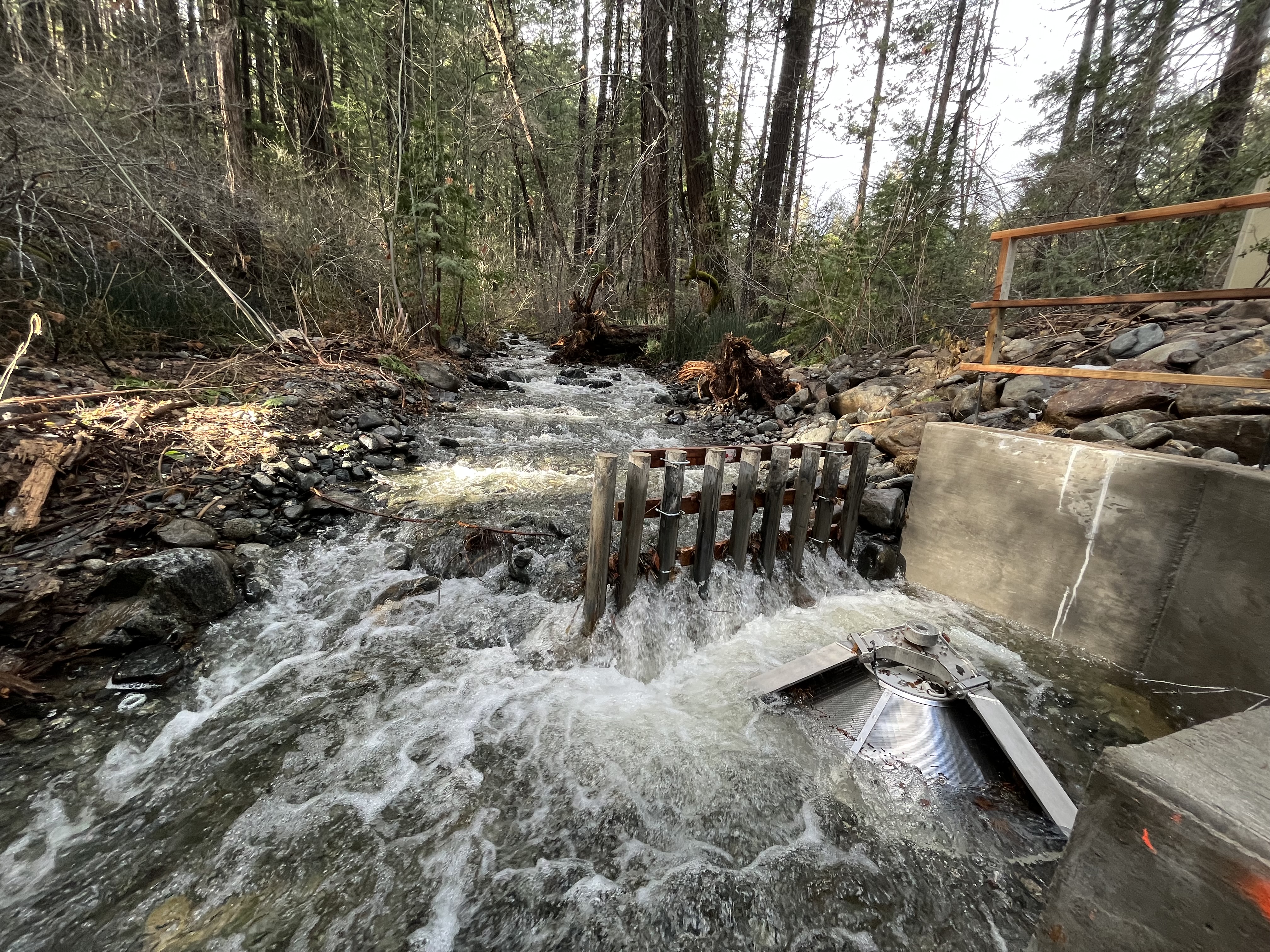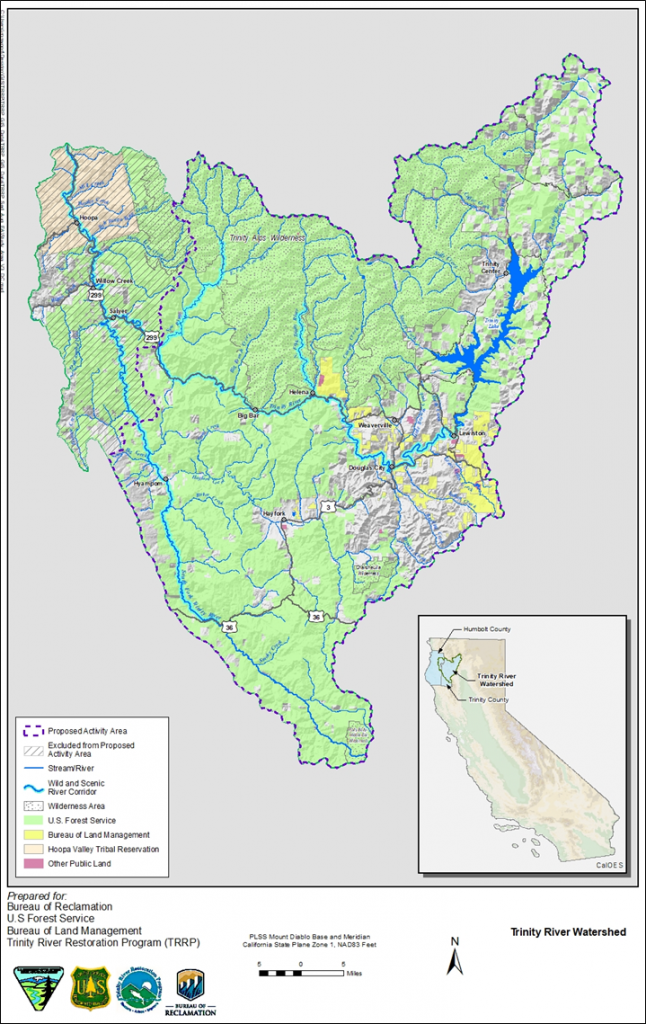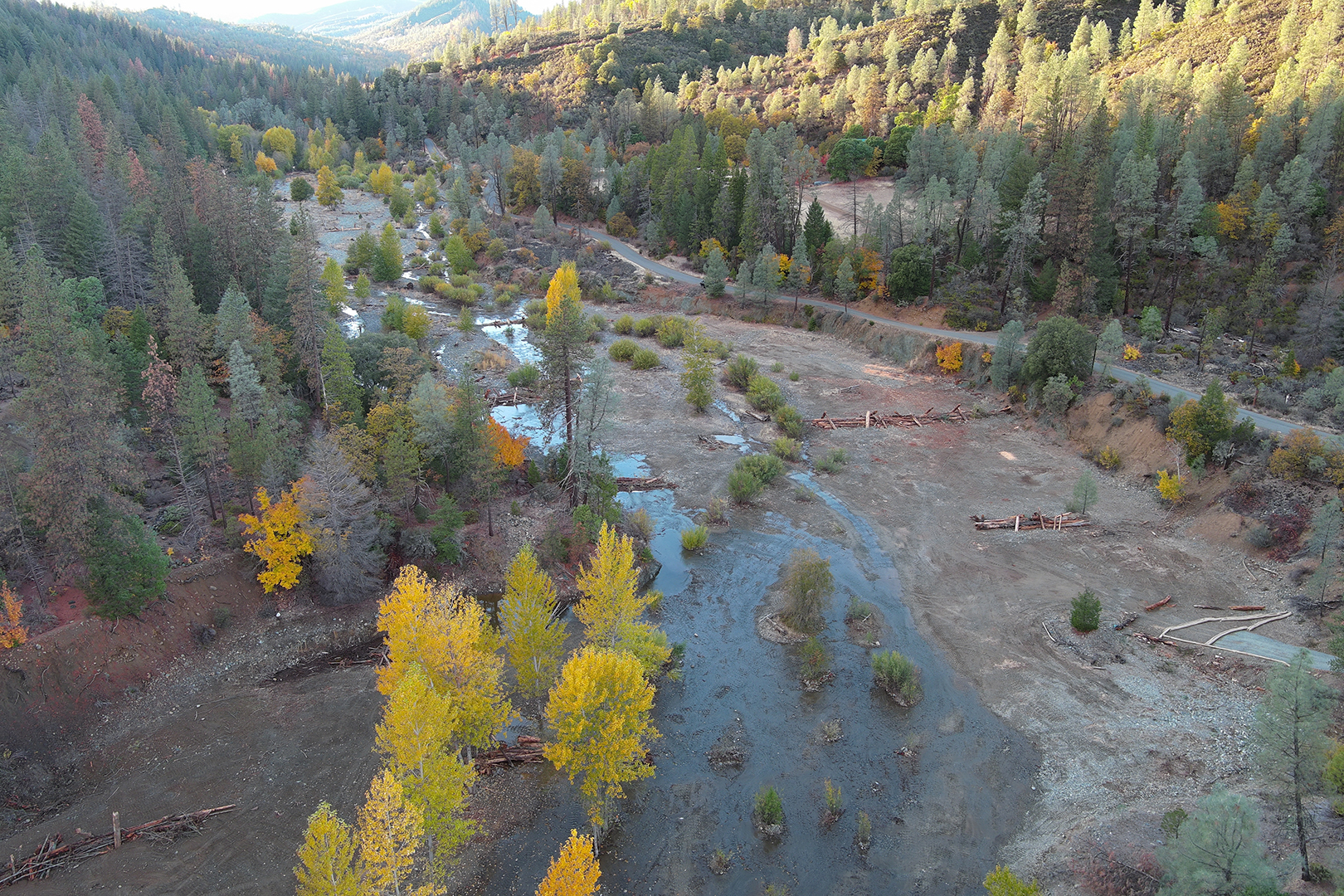
Trinity River Watershed, Ca. – The Trinity River Restoration Program is working with the Bureau of Land Management (BLM) – Redding Field Office and the US Forest Service (USFS) – Shasta-Trinity National Forest to help increase restoration projects within Trinity River tributaries. The Trinity River Watershed Restoration Project Environmental Assessment (Watershed EA) will cover projects related to;
- instream habitat restoration
- upslope habitat restoration
- road maintenance, rehabilitation, and decommissioning activities
The Watershed EA will be available to organizations whose restoration projects are funded by or are on land managed by TRRP/Reclamation, BLM, or the USFS and are within the project area and scope. Projects may require further site-specific environmental investigations, depending on the federal agencies involved in each individual project.
Proposed Project Timeline
Public Scoping: Nov. 4, 2022 – Dec. 5, 2022 (COMPLETE)
Draft EA for Public Comment: Mar. 28, 2025 – May 1, 2025 (COMPLETE)
Final EA and Decision: Spring 2025
Proposed Implementation: Summer 2025 – Watershed restoration projects would be implemented with site specific surveys and compliance for individual projects tiered to the Environmental Assessment.
Project Background
TRRP, BLM, and the USFS are preparing a draft Environmental Assessment to evaluate aquatic habitat restoration activities in the Trinity River watershed. The Environmental Assessment analysis focuses on restoration activities that improve the quality and quantity of accessible cold-water aquatic habitat. Project activities may require additional decisions, site-specific surveys, and consultation with associated regulatory agencies prior to implementation. Project activities would generally occur along roads and within areas designated as riparian reserves under the Northwest Forest Plan (1994), within the Trinity River watershed, in Trinity and Humboldt counties, California.

Following the 2000 Record of Decision, the U.S. Department of Interior established the Trinity River Restoration Program to restore the fisheries of the Trinity River affected by dam construction and related diversions of the Trinity River Division of the Central Valley Project. Administered by Reclamation, the Trinity River Restoration Program is a partnership of federal and state resource agencies, Tribes, and Trinity County. The Program works to restore the processes and attributes of a properly functioning river and watershed to support the recovery of diminished salmon and steelhead populations while retaining Trinity and Lewiston dams’ delivery of water and power to the Trinity River and California’s Central Valley.
One of the Trinity River Restoration Program’s primary objectives is to complete watershed restoration to recover aquatic and riparian habitat and improve water quality around tributary streams of the Trinity River. Proposed projects would restore hydrologic connectivity, reduce fine sediment input, increase water availability, support functioning habitat, and remove barriers to improve and connect aquatic habitat and restore ecological function.
Most of the land within the Trinity River watershed is managed by the US Forest Service and the BLM. Restoration activities that take place on federally managed lands or are funded by federal agencies must comply with federal environmental review and permitting requirements, including compliance with the Wilderness Act of 1964 for projects in designated wilderness areas, and with the Wild and Scenic Rivers Act of 1968 for projects impacting rivers designated as wild and scenic. The proposed project would provide broad environmental analyses under the National Environmental Policy Act (NEPA).
Decision to Be Made
At the finalization of the EA if no significant impacts result from the Proposed Action, the Bureau of Reclamation will sign a Finding of No Significant Impact (FONSI) and the BLM and USFS will issue separate decision documents. Additional site-specific compliance may be needed specific to lands managed, funding, and/or areas of responsibility under each agency’s jurisdiction. The Responsible Officials will decide whether to implement the proposed action, implement an alternative action that meets the purpose and need, or take no action.
How to Participate

You are invited to participate in the Trinity River Watershed Restoration Project Environmental Assessment by providing comments to us during the draft Environmental Assessment review period. If you have information or analysis that you feel the agencies may not be aware of or feel you have issues (points of dispute, debate or disagreement) regarding the proposed activities, please send those comments in writing to the address listed below. The agencies will consider all issues brought forward and determine if the proposed action should be adjusted or other alternatives be developed.
Comments received through these processes, including names and addresses of those who comment, will be part of the public record for this proposed action. Comments submitted anonymously will be accepted and considered; however, anonymous comments will not allow the agencies to provide the commenter with subsequent environmental documents.
Further Information
- Public Scoping Notice PDF (posted 2022-11-02)
- Public Scoping Flyer PDF (posted 2022-11-08)
- Public Meeting Held November 17, 2022 [details here]
